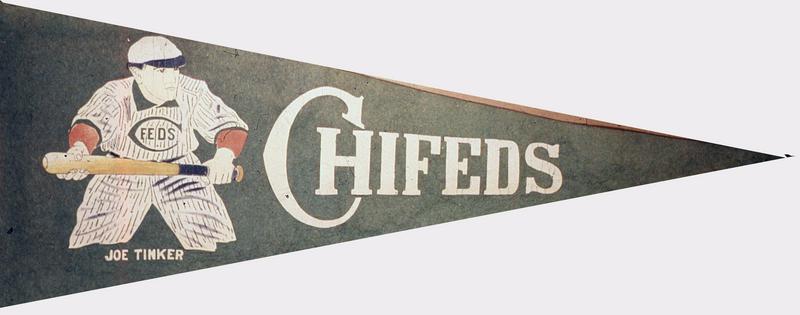Baseball's Upstart Federal League
By | August 22, 2019

By the early 20th century, baseball’s American and National Leagues were well-established and dominated the sport. It was also generally recognized that organized baseball was a money-making business. In 1913, John T. Powers attempted to upend the status quo with the creation of a third major baseball league, the Federal League of Base Ball Clubs.

Powers had attempted to start a third major league in 1912, called the Columbian League. This failed, but in 1913 he was able to use the remnants of another short-lived minor league, the United States League, to give it another go.
In early 1913, construction or renovation of six ballparks began in major cities. During the 1913 season, they were considered to be a minor league team according to the Cultural Encyclopedia of Baseball. Six teams competed in a 120-game schedule and there were no major stars on any team except the retired pitcher Cy Young managed the Cleveland club.

On August 2, 1913, James Gilmore replaced Powers as the president of the Federal League. Gilmore then aggressively expanded the number of teams although Cleveland dropped out. The Federal was nicknamed the “Flapjack Circuit” by writer Joe Vila since a large number of food businessmen financed the league. The final roster of teams for the 1914 season to:
Baltimore Terrapins
Brooklyn TipTops
Buffalo Blues
Chicago Whales
Indianapolis Hoosiers (moved to Newark in 1915 as the Peppers)
Kansas City Packers
Pittsburgh Rebels
St. Louis Terriers

The Federal League at first only signed players that were not in contract with the National or American Leagues. However, things soon got nasty between the upstart league and established organized baseball. The Federal League began to poach players from established teams ignoring baseball’s reserve clause which provided that a player could not change teams even after a contract expires unless that team unconditionally released him. When this started occurring the National and American Leagues were hesitant to try to enforce the clause, afraid that it would not hold up in court.

The Federal League eventually signed 221 players who were either in the major or minor leagues of organized baseball. At least 63 players ignored the reserve clause and jumped leagues.
To give an idea of the threat the Federal League posed to organized baseball, when the first game was played at Baltimore’s Terrapin Park on April 13, 1914, approximately 30,000 fans watched the game between the Terrapins and the Buffalo Blues. Meanwhile, at Oriole Park across the street, only 1,500 people watched an exhibition game between the New York Giants and the International League’s Orioles. Because this competition depressed profits, the owner of the Orioles was forced to sell the young baseball prodigy, George Herman “Babe” Ruth to the Boston Red Sox.

The Federal League’s 1914 pennant was won by the Indianapolis Hoosiers. In order to further break into the New York market, the team was relocated to Newark, New Jersey as the Peppers. The 1915 pennant was won by the Chicago Whales who played at Weeghman Park which would later become the Cubs’ famous Wrigley Field. Six players from the Federal League ultimately were inducted to the Hall of Fame, although all of these players did play in other leagues.
Despite the expansion, the Federal League it was struggling to survive. Contending that Major League Baseball was essentially a monopoly, the Federal League filed an antitrust suit. This remained tied up in courts for about a year. Meanwhile, the Federal League continued to decline. In December 1916 a settlement was reached which gave a payout of $600,000 to some Federal League team owners.

The Federal League was no more. Federal League players were auctioned off to the National and American Leagues. The Federal League did have a lasting impact on the structure of baseball, a secondary law case stemming from the Federal League’s incursion made its way to the Supreme Court where it was ruled that Major League Baseball’s reserve clause was legal since baseball was, according to Justice Oliver Wendall Holmes, “not trade or commerce in commonly accepted use of those words.” The reserve clause would remain in effect until 1975.

